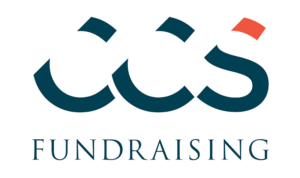The global coronavirus pandemic has brought unprecedented challenges and change to the philanthropic sector. Overnight, nonprofit leaders had to pivot from visionary plans for their futures to a laser-like focus on daily operations, responding to the health crisis and re-calibrating their fundraising activity to navigate a rapidly evolving environment.
The latest research conducted by CCS suggests that the pandemic’s negative impact on fundraising has reduced over time. Since our earliest survey in May 2020, the proportion of respondents reporting either a modest or significant decline in fundraising in response to the pandemic decreased. At the same time, the proportion of respondents reporting an increase in fundraising rose.
What changed? CCS’s research suggests that nonprofit leaders embraced new fundraising tactics, leaning into technology and developing innovative pathways to fundraise. These tactics include virtual events and online briefings with stakeholders. Many charities converted pre-existing events into a new virtual format, while others created entirely new online events that illustrated how their mission met this unique moment. Furthermore, many nonprofit leaders have embraced virtual gift requests as a part of their fundraising toolkit. Fifty-six percent of survey respondents conducted a request via phone, video, or both methods during the pandemic as of January 2021.
Now, amid so much uncertainty about the future of philanthropy, how can nonprofit leaders set themselves and their teams up for fundraising success throughout 2021?
The good news is that we are now in a more comfortable place where we can take what we’ve learned in 2020 and apply these lessons to the future. This will allow leaders to be more strategic, more innovative, and more deliberate in how they develop and implement fundraising plans in this evolving landscape.
Below are five recommendations to elevate your organisation’s fundraising strategy in 2021. These recommendations will prepare leaders with the knowledge and tools to maximise their philanthropic revenue as we continue to navigate a dynamic environment.
1. Plan for the unplanned
As we have learned, the future is uncertain and organisations that are nimble and innovative in the face of adversity can meet the moment with strength and success. To that end, stay well-prepared with scenario planning and revenue forecasting. Prepared organisations will have steadier balance sheets in the face of unexpected events, so develop a short-term action plan and identify diversified funding streams that include both outright and planned gifts.
2. Re-envision event opportunities for a virtual setting
As we have seen, nonprofit leaders are reimagining donor engagement opportunities for a virtual platform. For the foreseeable future, these virtual engagement methods will be fundamental to fundraising activity and revenue generation. As comfort levels around virtual events continue to increase, leverage the special opportunities afforded by the virtual format to build momentum and scale your impact. Don’t be afraid to be creative and bold!
3. Embrace evolving donor communication and lead with empathy
Consistent and transparent donor communication has always been valuable. Today more than ever, it is important to show empathy, concern, and gratitude for your stakeholders. Additionally, donors may be more available to meet virtually, so embrace the new “face-to-face” donor meeting and gift request conversation.
4. Prioritise Diversity, Equity, and Inclusion (DEI)
DEI is a vital lens through which to evaluate the stories you tell about your nonprofit and the communities you serve. It is also important to consider DEI relative to your internal practices and operational activity. Bringing diverse perspectives and talent to the table leads to more creativity and innovative ideas. Beyond helping to advance social change, this will translate to better performance and higher fundraising results.
5. Stay true to your goals while maintaining a flexible approach
At the end of the day, focus on your mission and why it’s relevant. Regardless of the communication method you use, reaffirm your purpose and the impact that philanthropic investments will have on the community you serve. Foundational fundraising principles still apply, and continued flexibility and adaptation may be needed.
As we continue to reimagine the philanthropic landscape, let’s focus on what we know, embrace opportunities for the future, and take action where we can to have the greatest social impact.
